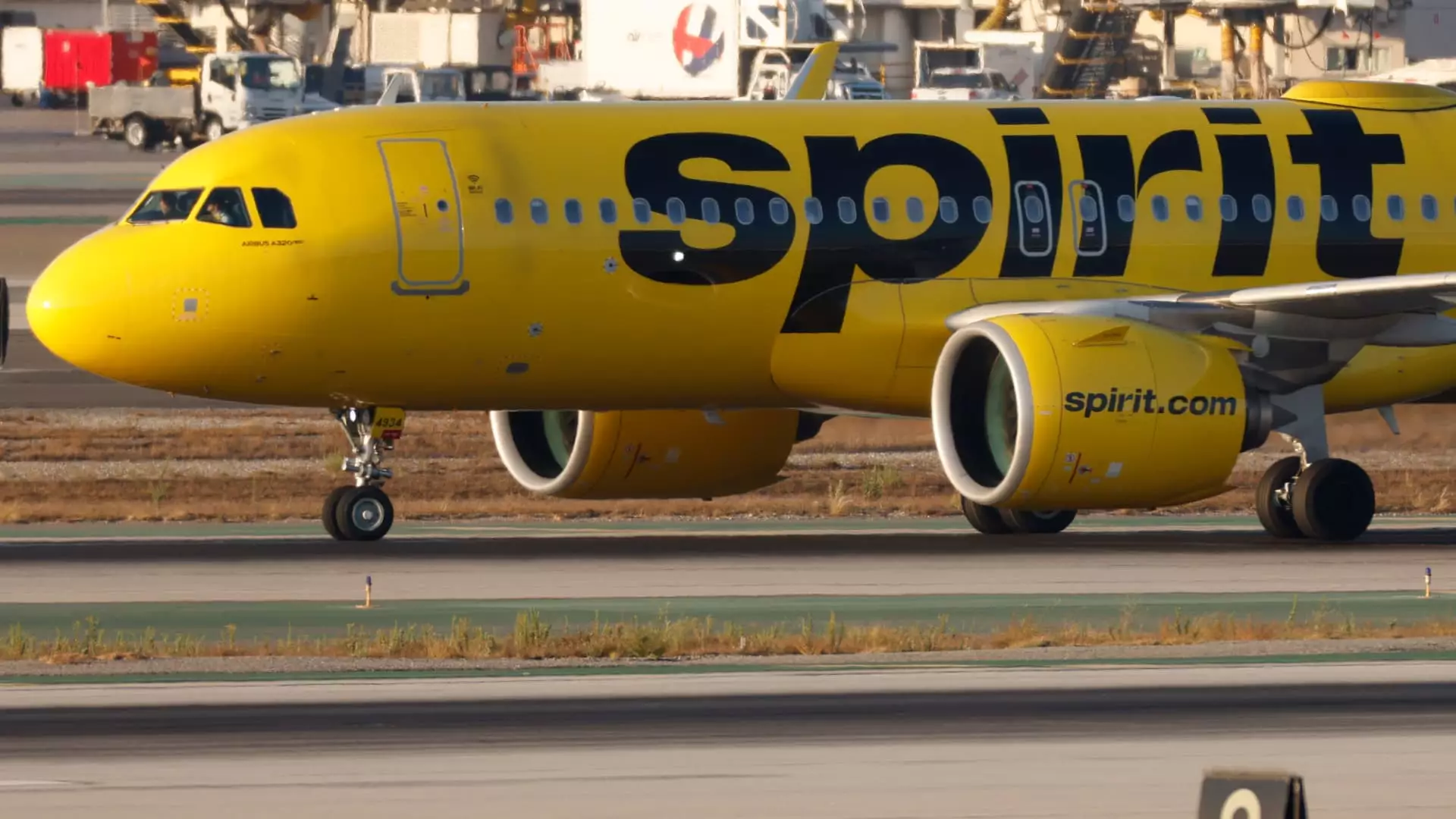Spirit Airlines has long been emblematic of the low-cost travel sector, known for its no-frills service and ultra-low fares. However, the airline’s tumultuous journey has landed it into Chapter 11 bankruptcy protection, marking a significant milestone for one of America’s most recognized budget carriers. This decision arises from a confluence of adversities, including declining profits, a failed merger with JetBlue Airways, and changing consumer expectations in the post-pandemic travel landscape.
Founded in the mid-1980s, Spirit Airlines carved a unique niche by implementing a business model that prioritized affordability. Travelers quickly embraced their “bare-bones” approach, cheering on their accessible ticket prices. Yet, the evolving nature of air travel—marked by heightened service demands and customer expectations—has rendered this model increasingly unviable. As the airline seeks to navigate through its financial challenges, the underlying question lingers: can it adapt in an industry that is leaning more toward convenience and comfort?
Current Challenges and Bankruptcy Filing
The decision to file for bankruptcy was not made lightly. Earlier in the week, Spirit Airlines announced arrangements with bondholders that included $300 million in debtor-in-possession financing to stabilize operations during the restructuring process. Their filing is indicative of the dauntless atmosphere confronting budget airlines today. With Spirit anticipating an exit from bankruptcy by early next year, it appears that the airline is keen to reposition itself within a rapidly adapting travel market.
However, the brunt of the airline’s struggles isn’t purely financial. An extensive engine recall had already sidelined several of its aircraft, further decreasing operational capacity when it faced an influx of post-pandemic travel demand. Moreover, the aborted merger with JetBlue heightened scrutiny over competitive practices in the industry, drawing attention to potential monopolistic behavior in a sector dominated by a mere handful of carriers.
Despite the bankruptcy declaration, Spirit reassured customers they can continue to book and fly using tickets, credits, and loyalty points as usual. Their CEO, Ted Christie, emphasized this point in a letter to patrons on Monday, aiming to mitigate uncertainty among passengers. This assurance may help preserve the trust of loyal customers in a challenging time when public relations can often be tested under fiscal strain.
It’s essential to recognize that customer expectations are shifting. The pandemic has reshaped what travelers prioritize; elements like increased legroom, flexible booking options, and enhanced in-flight services have become fundamental to many flyers. While Spirit’s ultra-low fare structure succeeded in fulfilling the needs of budget-conscious travelers, it now needs to find a balance between operational costs and the desire for a better travel experience.
Financial Losses and Operational Adjustments
Remarkably, Spirit Airlines hasn’t recorded a profit since 2019. The airline’s financial sheet reveals staggering losses exceeding $335 million in the first half of this year alone. In response, Spirit has sold numerous aircraft to bolster its liquidity. Selling 23 Airbus aircraft generated $519 million, underscoring a strategic pivot to find financial balance—indicative of the scarcity of planes in today’s market.
Despite these efforts, more profound operational adjustments loom on the horizon. With plans to furlough around 330 pilots in January—on top of already implemented staff reductions—that illustrate the grim outlook that the airline currently faces. While analysts expect the carrier to slim down further during bankruptcy proceedings, mere survival may not be enough; transformative strategies may be crucial for rescue.
With the airline’s chapter marked by financial strains and restructuring, one must inquire whether Spirit can reclaim its original allure while staying relevant in an evolving marketplace. The low-cost model, while successful for over a decade, has recently experienced growing competition from traditional carriers adopting similar pricing structures with more amenities.
Furthermore, the potential of conversations between Spirit and Frontier Airlines may lead to a revival in collaborative endeavors that could foster competitiveness—if allowed to progress without litigation hurdles. Industry analysts speculate that these talks may resume in the near future, potentially paving the way for a merger that could offer operational synergies and stabilize Spirit’s footing.
As Spirit Airlines navigates this tumultuous chapter while striving for financial rehabilitation, the future remains uncertain. For fans of budget travel, its survival will be watched closely, and whether it can revive its storied legacy in the realm of no-frills air travel will depend on its ability to adapt uniquely and strategically to the preferences of today’s discerning traveler.

